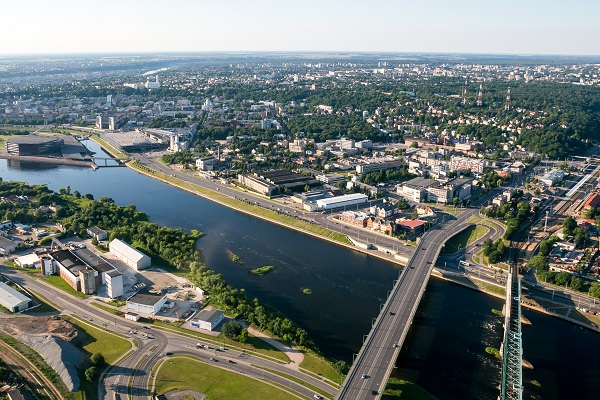 The Ober-Haus Lithuanian apartment price index (OHBI), which records changes in apartment prices in the five major Lithuanian cities (Vilnius, Kaunas, Klaipėda, Šiauliai and Panevėžys), increased by 0.2% in August 2017. The annual apartment price growth in the major cities of Lithuania was 4.0% (the annual apartment price growth in July 2017 was 4.2%).
The Ober-Haus Lithuanian apartment price index (OHBI), which records changes in apartment prices in the five major Lithuanian cities (Vilnius, Kaunas, Klaipėda, Šiauliai and Panevėžys), increased by 0.2% in August 2017. The annual apartment price growth in the major cities of Lithuania was 4.0% (the annual apartment price growth in July 2017 was 4.2%).
In August 2017 the largest price increase was recorded in Kaunas, where prices increased by 0.5% with the average price per square meter reaching EUR 1,013 (+5 EUR/sqm). Apartment prices in Klaipėda in August grew by 0.2% with the average price per square meter reaching EUR 1,032 (+2 EUR/sqm). In Vilnius and Šiauliai was recorded 0.1% apartment price increase with the average price per square meter reaching EUR 1,455 (+2 EUR/sqm) and EUR 606 (+1 EUR/sqm) respectively. Meanwhile, in Panevėžys 0.2% decrease was recorded and the average price per square meter dropped to EUR 564 (-1 EUR/sqm).
In the past 12 months, the prices of apartments grew in all major cities: 4.5% in Vilnius, 4.1% in Kaunas, 2.9% in Klaipėda, 2.8% in Šiauliai and 3.0% in Panevėžys.
‘The housing market was more active in August this year compared to normal. The number of apartment sales-purchase transactions during August in Lithuania exceeded 3000, making August the most active month of this year. Compared to July 2017 there was an increase in apartment transactions in all cities of the country. Thus, the Lithuanian housing market is accelerating rapidly and the curve of housing prices keeps climbing higher’, Saulius Vagonis, Head of Valuation & Analysis Department at Ober-Haus, said.
Lithuanian Apartment Price Index, August 2017
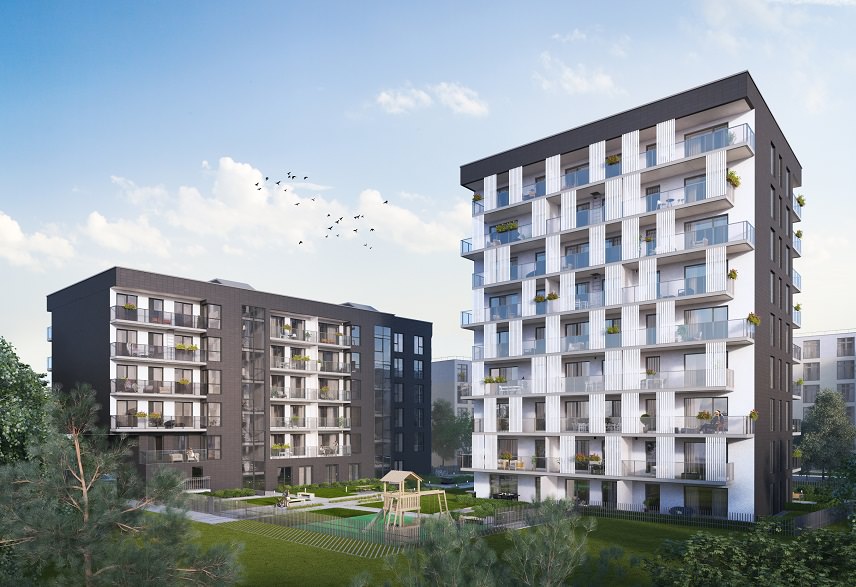 Construction of the new residential project Centro Duetas has been launched at 81 Lvovo Street, in the vicinity of Konstitucijos Avenue in the central part of Vilnius. The project consists of two 6- and 9-storey urban apartment buildings. It will offer a total of 90 apartments (size: 1.5, 2 and 3 rooms) from 39 sqm to 74 sqm and three commercial property units from 100 sqm to 120 sqm. Completion of Centro Duetas is scheduled in June 2018.
Construction of the new residential project Centro Duetas has been launched at 81 Lvovo Street, in the vicinity of Konstitucijos Avenue in the central part of Vilnius. The project consists of two 6- and 9-storey urban apartment buildings. It will offer a total of 90 apartments (size: 1.5, 2 and 3 rooms) from 39 sqm to 74 sqm and three commercial property units from 100 sqm to 120 sqm. Completion of Centro Duetas is scheduled in June 2018.
Both buildings will be built in the second row on Lvovo Street and Linkmenų Street, in a quiet and peaceful courtyard. ‘Konstitucijos Avenue and the area in the vicinity of the avenue feature surprising volumes of development of modern business centres. This is a location for concentration of a strong workforce, which wishes not only to work and rest, but also to live here. Those who work in the surrounding offices of the area show strong interest in homes’, Audrius Šapoka, manager of the Residential Real Estate Department of Ober-Haus, said.
Technical solutions implemented in the project have such comfort-oriented features particularly appreciated by buyers as controlled underfloor heating for even heat distribution, a recuperation system to ensure fresh indoor air, and natural light through large down-to-floor windows. The apartment floor plan has been carefully considered to avoid wasted space. All apartments will have up to 17 sqm spacious terraces. The site will be lit; a yard and a playground will be built within the complex. Parking and storage units located underground will be equipped with security cameras.
‘Over the past three years, the activity of the housing market has been growing in Vilnius and the lack of high quality medium class properties in the central part of the city – Konstitucijos Avenue and its environs – prompted the construction of Centro Duetas. Particularly great attention was paid to technical, floor plan and architectural solutions. We are well aware that they are very important for comfort of residents and liquidity of assets in the case of their rental or sale in the future’, Mr Šapoka said.
Investor – UAB Spaineta, construction manager – UAB Incorpus, general contractor – UAB Naresta, concept development, marketing and sales – UAB OBER-HAUS nekilnojamas turtas.
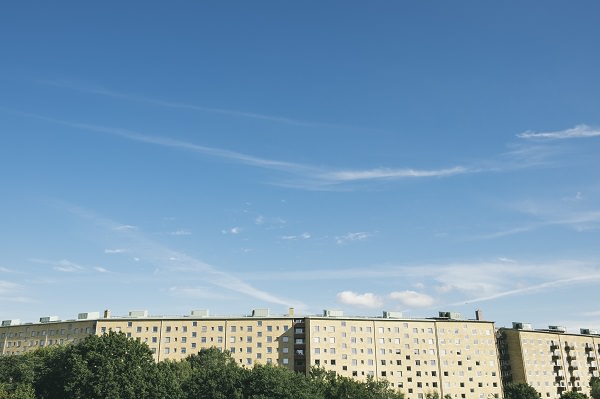
The activity in the residential property market in Q2 2017 remained essentially high. Although the number of transactions for apartments compared to last year slightly decreased, the overall performance of the quarter was one of the best in the past 10 years (compared to Q2 in previous years). In the meantime, the house market indicators soared. According to data from the State Enterprise Centre of Registers, the number of purchase and sale transactions for apartments in Q2 2017 in Lithuania was 4% lower and the number of transactions for houses was almost 7% higher than in the same period in 2016. In Q2 2017, on average 957 transactions for houses and 2,741 transactions for apartments were concluded per month in Lithuania. In the first half of 2017, the largest number of transactions for houses was recorded in June; this was also the highest indicator since 2007.
Looking at the new housing segment which has been growing rapidly in recent years, total sales volumes of new apartments in Q2 2017 in the country’s major cities were the lowest since late 2015. According to data from Ober-Haus, 1,224 new apartments in completed buildings or buildings in progress were purchased or reserved directly from developers in the five major cities of Lithuania in Q2 2017. This is 16% less than those realized in Q1 2017 and 14% less than those realised in Q2 2016.
‘The indicators of the capital city, which has been in the lead of the new residential property market and where the lowest volume of sales in this market over the past five quarters was recorded, had a major effect on the overall performance in this segment in Q2 2017’, Saulius Vagonis, head of Valuation & Analysis Department of Ober-Haus, said. In this period, a total of 991 new apartments in completed apartment buildings or projects in progress were sold or reserved in Vilnius. This is 13% less than in Q1 2017 and 16% less than in Q2 2016. Despite the fall in the sales volumes in the capital city, the overall performance is not disappointing. Record sales of new apartments in Vilnius in 2016 were related with rapidly growing supply where most of the projects were scheduled for completion in 2017. Ober-Haus estimates that up to 4,300-4,500 new apartments should be completed in Vilnius this year or 15-20% more than in 2016. Since last year buyers showed very active interest in housing and purchased apartments from this year’s supply (i.e. the projects to be completed in 2017), there is considerable lower choice of apartments in completed buildings or buildings in progress at the moment; however, customers have a much wider choice of the projects to be completed in 2018. It is too early to quantify the total new supply in Vilnius in 2018, but based on the planned and already started projects, it seems that new supply won’t be higher than in 2017.
In the meantime, the sales volumes of new apartments in Kaunas, compared with those last year, have increased. Developers feel more confident about the overall situation of the city and plan to build 800 new apartments this year. This would be the biggest supply since 2008, which will also boost sales figures. In Q2 2017, 166 apartments were sold or reserved in the primary market in Kaunas or 15% more than in the same period last year. In Klaipėda, 63 new apartments were sold or reserved, i.e. 34% less than in the same period last year. ‘Smaller sales volumes in Klaipėda are determined by smaller construction volumes – over 300 new apartments are scheduled for completion this year. Although this would be about 50% more than the number of apartments built in 2016, the figures for completed projects in Klaipėda over the past seven years (on average 200 apartments were built each year between 2010 and 2016) show a rather reserved attitude of developers to the housing market in this seaport city (particularly within the context of the 2006–2009 period where on average 900 apartments were built each year). The 2010–2016 figure for Kaunas was 280 newly constructed apartments on average per year and 2,100 newly constructed apartments per year in Vilnius’, Mr Vagonis said.
Decreasing return on investment from housing rental recorded
The comparison of the sale and rent price of housing property in major cities has showed some new trends recently. For example, in 2011–2016, the rent for the most popular 2-room apartment in Vilnius, Kaunas and Klaipėda increased by a third on average. That is, a fast increase in rent was recorded, yet sales prices of apartments over the same period suffered falls and rises of different magnitude in these cities. Rapidly increasing apartment rents significantly increased returns on investment in such property, which indicates a downward trend this year. The most visible changes can be observed in the capital city. Rents for 2-room apartments (in the first half year of 2017 compared to the same period in 2016) remained stable in Vilnius, while the sales prices of such apartments increased by more than 8%. The gross annual rental yield (annual rent and acquisition price ratio, not taking into account the property management expenses and taxes) of such property in Vilnius totalled 5.1%, which was 0.4 percentage points lower than that in the first half of 2016. The same trends were recorded in Kaunas. Sales prices of such apartments during the same period increased by more than 7%, while rents increased by more than 3%. Consequently, the gross annual rental yield decreased from 6.3% to 6.1%. In the meantime, in Klaipėda rent growth outpaced sales price growth driving yields up from 5.8% to 6.0%.
‘Since the markets in Vilnius and Kaunas are in the stage of faster growth of sales prices and the situation in the financial market is very attractive for buyers, it is likely that the return on investment in these cities will decrease in the nearest future (where property sales price growth outpaces rent growth). However, the decreasing returns on property lease will hardly deter those willing to invest in the housing rental segment. The decrease in rental return still remains attractive to potential investors interested not only in yearly income and return, but also in the increasing value of the property. Investors may be prepared to accept lower profitability rates solely because of the expectation that the value of their property will keep rising’, Mr Vagonis said.
Lithuania Residential Market Commentary Q2 2017
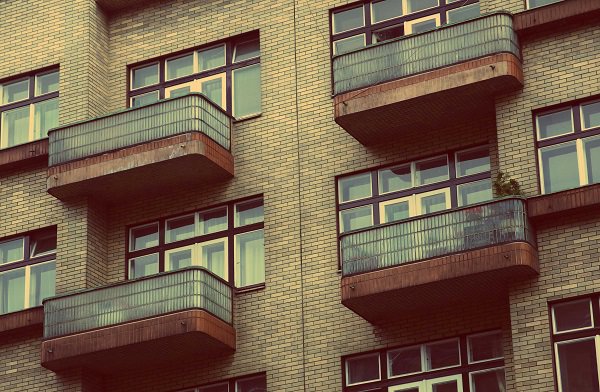 The Ober-Haus Lithuanian apartment price index (OHBI), which records changes in apartment prices in the five major Lithuanian cities (Vilnius, Kaunas, Klaipėda, Šiauliai and Panevėžys), increased by 0.5% in July 2017. The annual apartment price growth in the major cities of Lithuania was 4.2% (the annual apartment price growth in June 2017 was 4.1%).
The Ober-Haus Lithuanian apartment price index (OHBI), which records changes in apartment prices in the five major Lithuanian cities (Vilnius, Kaunas, Klaipėda, Šiauliai and Panevėžys), increased by 0.5% in July 2017. The annual apartment price growth in the major cities of Lithuania was 4.2% (the annual apartment price growth in June 2017 was 4.1%).
In July 2017 apartment prices in the capital grew 0.5% with the average price per square meter reaching EUR 1,453 (+7 EUR/sqm). Since the last lowest price level recorded in May 2010 prices have increased by 25.9% (+299 EUR/sqm). Apartment prices in Kaunas, Klaipėda and Šiauliai in July grew by 0.3%, 0.6% and 0.1% respectively with the average price per square meter reaching EUR 1,008 (+3 EUR/sqm), EUR 1,060 (+7 EUR/sqm) and EUR 605 (+0.7 EUR/sqm). In Panevėžys no price changes were recorded and average apartment price remained the same as in June – EUR 565.
In the past 12 months, the prices of apartments grew in all major cities: 5.1% in Vilnius, 3.7% in Kaunas, 2.7% in Klaipėda and Šiauliai, and 3.4% in Panevėžys.
‘The statistics of the past twelve months shows that prices for both old and new apartments are increasing. In terms of the most active major cities in Lithuania, the fastest price increase was observed in the market of relatively old apartments in Vilnius and in the market of newly built apartments in Kaunas and Klaipėda. Over the past twelve months, prices of relatively old apartments increased by 5.6% and those of new apartments – by 4.5% in Vilnius. In the meantime, prices of relatively old apartments increased by 3.0% and 1.8% in Kaunas and Klaipėda respectively, and those of new apartments – by 5.4% and 4.5% respectively. New projects initiated in Kaunas and Klaipėda recently offer a wider choice for customers both from the point of view of location and quality. Developers starting new projects plan higher sales prices of residential property due to rising construction costs, higher technical requirements for the buildings, and changing needs of customers’, Saulius Vagonis, head of the Valuation and Market Research Department at Ober-Haus, said.
Lithuanian Apartment Price Index, July 2017
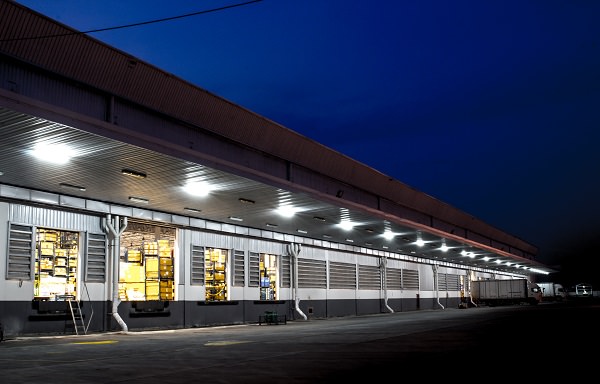 The recovering transport and logistics services sector has finally provided a stimulus for the development of warehousing premises in the country’s biggest regions. According to the data of Statistics Lithuania, sales revenue of transport and warehousing companies in Lithuania grew by 17.8% in Q1 2017 compared to the same quarter last year. Meanwhile, the sales revenue of warehousing and storage companies (excl. VAT) was EUR 33.4 million over the same period or 12.5% and 23.7% more compared to the same periods in 2016 and 2015 respectively.
The recovering transport and logistics services sector has finally provided a stimulus for the development of warehousing premises in the country’s biggest regions. According to the data of Statistics Lithuania, sales revenue of transport and warehousing companies in Lithuania grew by 17.8% in Q1 2017 compared to the same quarter last year. Meanwhile, the sales revenue of warehousing and storage companies (excl. VAT) was EUR 33.4 million over the same period or 12.5% and 23.7% more compared to the same periods in 2016 and 2015 respectively.
‘The revival in the development of warehousing premises can be felt in Vilnius and Kaunas regions where development projects are taken up not only by companies which build for their own needs but also by property developers’, Saulius Vagonis, head of the Valuation and Market Research Department at Ober-Haus, said. Some projects have even been launched without prior lease agreements. As many as three new warehousing and logistics premises projects were implemented over the first half-year in Vilnius and Kaunas regions; the total area of warehousing premises from these projects amounts to about 20,400 sqm. The two biggest projects have been implemented in Vilnius: the logistics and transport company Ad Rem has built a warehouse in the territory managed by it in Kirtimai district, and a Norwegian company, Baltic Sea Properties, has completed the construction of a logistics centre not far from the Vilnius–Druskininkai road (a logistics centre with an area of 13,400 sqm has been leased along with administrative premises to a logistics company Rhenus Svoris). Following the implementation of these projects at the end of the second quarter of 2017, the total area of warehousing premises in Vilnius city and its surroundings increased to 500,800 sqm.
Over this period, a small project was implemented in Kaunas district as well: Vetmarket built a modern veterinary pharmacy warehouse for its own needs. Further projects are currently being developed in Kaunas city and its surroundings and these should increase the area of warehouse premises noticeably this year. Over the second half-year of this year, construction of the Aibė logistics centre should be completed, as should the Epro group warehousing and administrative premises near the Islandijos road. Analizė, a company specialising in sales of odontological and other medical measures is building a new medicines warehouse with administrative premises in Ringaudai district. Meanwhile, Petrašiūnai district is seeing the approaching completion of a warehousing building with an area of almost 4,000 sqm. In total, these projects should implement the modern warehousing premises market of Kaunas with a further 34,700 sqm of warehousing premises. Presently the total area of modern warehousing premises in Kaunas city and its surroundings is 280,700 sqm.
Over the second half of 2017, Vilnius should record completion of four more warehousing projects (or their stages), with a total area would of 39,100 sqm. These projects are being developed by Sirin Development, Arvydo Paslaugos, Woodline, and MG Valda. Taking into account all these projects, in 2017 alone, Vilnius and Kaunas regions will have almost 74,000 sqm of new warehousing premises, which means an almost 10% annual growth in supply in these regions. ‘Taking a look at next year, it can be seen that developers and companies are not going to stop and that there are plans to invest in the modernisation of available premises, in their expansion and in construction of new projects for rent in Vilnius and Kaunas regions’ Mr Vagonis said.
Moderate growth in rents of warehousing premises has been recorded in the last few years. This growth has continued this year as well. The remaining demand for modern premises contributed to the development of this sector and to the growth of property prices. Over the first half 2017, rents of new and old warehousing premises in Vilnius region increased by 3–4%, meanwhile, the rents of warehousing premises in Kaunas and Klaipėda regions grew by 1–2%. Currently, new warehousing premises in Vilnius are offered for rent at 3.8–5.2 EUR/sqm, and old premises are available for 1.6–3.4 EUR/sqm. In Kaunas, new warehouses can be rented for 3.7–5.2 EUR/sqm, and old ones for 1.5–3.0 EUR/sqm. In Klaipėda, new warehouses are available for 3.5–4.9 EUR/sqm, and old – for 1.4–3.0 EUR/sqm. The growing financial capacity of tenants, increasing prices for land and increasing construction costs might determine further moderate rents growth in the near future.
Lithuania Commercial Market Commentary Q2 2017
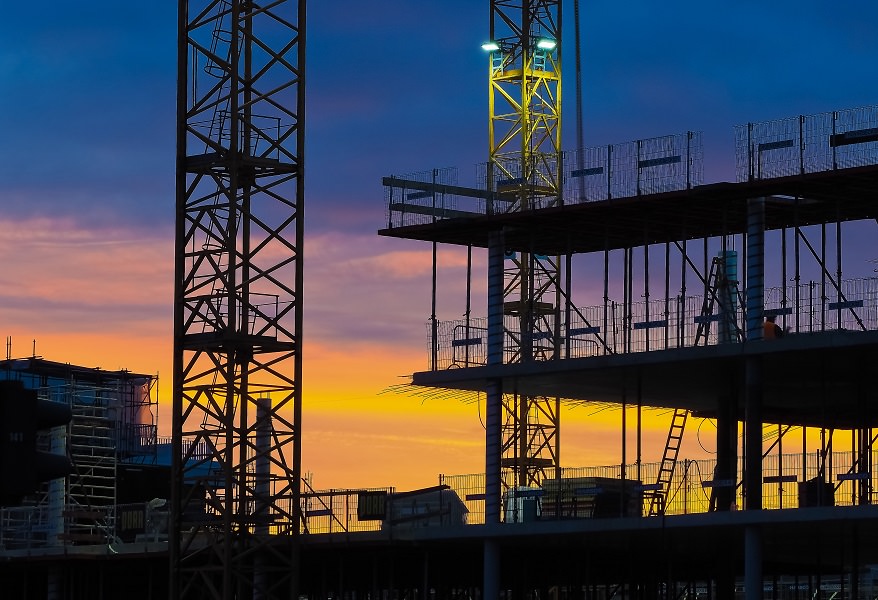
In 2017, activity in the commercial real estate market reached record new levels countrywide. According to the data of the State Enterprise Centre of Registers, the first half of this year in Lithuania saw over 4% more transactions on non-residential properties (buildings and premises) compared to the same period in 2016. In total, 9,159 non-residential buildings and premises were purchased over the first half of this year in Lithuania and this is the best first half year result in the country’s history. According to Statistics Lithuania, construction works worth EUR 404 million were carried out in the non-residential buildings sector in the first half of 2017 or 15% more than in the same period in 2016.
In Q2 2017, the fastest expansion of new offices was recorded in Kaunas city. Developers and other companies actively developed buildings of different purpose which provided new area for offices both for own needs and for the market. All in all, five different purpose construction projects were completed. All five projects offered a total of 14,700 sqm useful office area (A and B blocks in Prospekto Verslo Parkas, Sitis, Žaliakalnio Terasos, B66 and the newly completed headquarter of the consulting company SDG). Due to these projects the modern office premises market in Kaunas grew by as much as 15% over the second quarter of this year and the total office supply reached 111,800 sqm. This sharp growth in supply affected the vacancy rate in Kaunas – over the second quarter of this year it increased from 2.4% to 7.9%. The largest area of office premises was offered by YIT Kausta, the construction and development company which has completed construction of the office building B66 on K. Baršausko Street offering about 4,900 sqm of office area to the market.
On completion of the development, about 70% of its premises were already rented. The biggest tenants are the IT companies Teltonika and Virtustream. Since there is no longer any shortage of administrative premises projects in Kaunas and the market will gradually be supplemented with new projects in 2017–2018, it is inevitable that there will be an increase in the number of vacant premises. However, the wider choice also makes the demand more active since companies can plan their expansion very realistically or consider establishing their business in Lithuania’s second biggest city. Kaunas is still very attractive for larger companies where rents are on average 20% lower than in Vilnius. Recently the office rents in Kaunas has stabilised and it is unlikely that it will increase significantly in the existing competitive environment. Over 2017 alone, the modern office market in Kaunas city will be supplemented with a useful office area of 30,000–40,000 sqm, i.e. this year the total modern office premises market in Kaunas might increase by as much as 30–40%. At the end of the second quarter this year, the rents for A class offices in Kaunas was 11.0–13.5 EUR/sqm, B class – to 6.0–10.0 EUR/sqm.
Meanwhile, the country’s capital welcomed the second quarter of this year in a more modest manner since the construction of an office building of P. Baublio Street had been completed just before Q2 2017. This building, Santariškes Medical Business Center, with an area of around 2,000 sqm was rented to one tenant (private clinic). The total area of the modern office premises grew to 647,400 sqm at the end of the second quarter in Vilnius. Meanwhile, tenants of office premises were particularly active and continued to reduce the amount of vacant premises in already operating office buildings. The area of rented modern office premises amounted to over 11,000 sqm in the second quarter of this year in Vilnius and reduced the total vacancy rate from 5.8% to 5.1%. The vacancy rate of A class offices accounted for 2.7%, and of B class – for 6.3%. It could be said that the speedy development of modern office premises that has taken place over the last few years in Vilnius has been successful. Taking a look at the projects that have been completed in 2017 and that are nearing completion, it can be seen that new projects have definitely received a considerable amount of interest on the part of tenants. Most of the latest projects do not face any major problems in relation to finding tenants. Even some lease agreements are signed beforehand, though construction has not even started, and this fact signals a sufficiently fast business development. If all the planned projects will completed this year, the market of modern offices in Vilnius city will be replenished with up to 15 different projects or their stages with a total useful area of 84,000 sqm. The well-balanced supply and demand continues to maintain stable office rents in Vilnius which, in principle, have not changed since the end of 2015. Currently, B class offices are renting at 8.0–13.0 EUR/sqm, A class – at 13.5–16.5 EUR/sqm.
Meanwhile the office market in Klaipėda city continues to be stable. The port city has long failed to demonstrate any abundance of new projects. Nevertheless, lately, the development of some small projects can be noticed. In the third quarter this year, the construction of a new 1,000 sqm area building on S. Nėries Street should be completed. It is planned to rent the building to companies in the medical services industry. No other major office development plans are anticipated in Klaipėda in the near future. The previously announced and already launched development of the industrial territory on Liepų Street, which is being carried out by Viremidos Investicijos and which planned to build the office building Kamino Biurai during the first stage, is now being adjusted.
This territory will now be used for the development of the technology park Inovacijų ir Verslo Slėnis which should house institutions and agencies training IT, digital design and other innovative field specialists. The sluggish expansion of companies that need modern and more expensive office premises continues to maintain a fairly high level of vacant premises in Klaipėda city. Although the vacancy rate of modern office premises reduced from 18.3% to 17.3% over the second quarter of this year, this indicator has remained within the range of 15–20% since the end of 2011. Meanwhile, investors in new and bigger scope projects are deterred by relatively low office rents whose growth potential is limited due to too small demand. For example, recently only the administration of Klaipėda city municipality has considering acquiring or renting larger premises. For this reason, office rents have remained the same: they are 6.0–9.0 EUR/sqm in B class buildings, and 9.0–12.5 EUR/sqm in A class buildings.
Lithuania Commercial Market Commentary Q2 2017
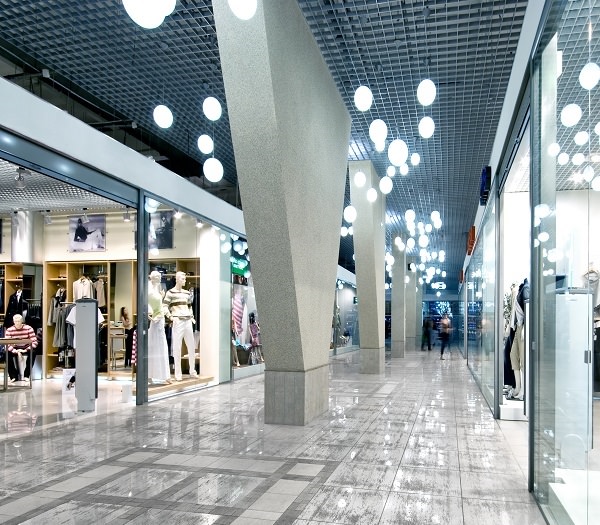 In the first half of 2017, investor activity in commercial real estate in the Baltic countries was not uncommon, but the recorded scope of investment showed an unfading interest in the modern commercial property. A total of 18 investment transactions were concluded in this period in Lithuania, Latvia and Estonia, which involved the purchase of over 312,000 sqm of cash flow commercial property (modern offices, retail, warehousing and industrial buildings and premises, at least EUR 1.5 million in value). The total value of the acquisitions was EUR 368 million, nearly 18% less compared to the first half of 2016.
In the first half of 2017, investor activity in commercial real estate in the Baltic countries was not uncommon, but the recorded scope of investment showed an unfading interest in the modern commercial property. A total of 18 investment transactions were concluded in this period in Lithuania, Latvia and Estonia, which involved the purchase of over 312,000 sqm of cash flow commercial property (modern offices, retail, warehousing and industrial buildings and premises, at least EUR 1.5 million in value). The total value of the acquisitions was EUR 368 million, nearly 18% less compared to the first half of 2016.
One transaction concluded in mid-2017 had a major effect on this year’s indicators. The transaction involved the acquisition of 80% ownership interest in the property investment company, Baltic Retail Properties, by CPA®:17 – Global of the US investment company W. P. Carey, and the Finnish Kesko Corporation. The property portfolio of Baltic Retail Properties comprises 18 retail stores in Lithuania, Estonia and Latvia, and a logistics centre in Lithuania. Following the acquisition, CPA®:17 – Global controlled by W. P. Carey Inc. became the main shareholder of Baltic Retail Properties paying EUR 127 million (including acquisition-related charges and costs) for its 70% share. Meanwhile Kesko acquired 10% of the shares of Baltic Retail Properties following Kesko’s sale of its 7 retail stores in Latvia and Estonia to Baltic Retail Properties for EUR 64 million.
Lithuania shared the major portion of the investment in the first half of 2017, i.e. EUR 198 million or 54% of the overall investment in the Baltic countries. The largest investment transactions in Lithuania during the period were the said acquisition of the shares in Baltic Retail Properties and the acquisition of the Vertas and Pentagon office buildings in Vilnius. In June 2017, the Swedish investment company Eastnine (former East Capital Explorer) completed the acquisition of Vertas. The company paid EUR 29 million for the building, which, according to the buyer, at the time of the acquisition guaranteed about 6.5% yield. The Finnish property investment and management company Technopolis purchased an almost completed office building in Ozas Park from the ICOR Group. The transaction involved the purchase of both the office building and the parcel of land next to the building. The acquisition of the building was completed in April, and the acquisition of the land is scheduled for completion by the end of 2017. The total transaction value is about EUR 32 million. According to the official notice of Technopolis, the initial yield of 6.5% is forecast on completion.
The value of investment transactions in Estonia in the first half of 2017 totalled EUR 91 million or 25% of the overall investment in the Baltic countries. The largest investment transactions in Estonia involved the sale of 3 retail centres managed by Kesko to Baltic Retail Properties, the acquisition of the shares in Baltic Retail Properties mentioned above, and the sale of the Prisma Shopping Centre in the city of Narva (the shopping centre was purchased by the French property management company CORUM for EUR 16.7 million from EfTEN Kinnisvarafond AS controlled by EfTEN Capital). Latvia saw the smallest share of investment over the period totalling EUR 79 million. The major portion of the investment in Latvia accounted for the sale of 4 retail centres managed by Kesko to Baltic Retail Properties and subsequent sale of the shares of Baltic Retail Properties to CPA®:17 – Global.
Almost 70% of investment pumped into commercial property acquisitions in the Baltic countries
Transactions involving W. P. Carey Inc., Kesko and Baltic Retail Properties determined the distribution of investment by property segments in the first half of 2017. Of the total EUR 368 million invested in Lithuania, Latvia and Estonia 69% went to the retail property sector. A total of 25% investment was made in offices and the remaining smallest portion (6%) was traditionally invested in warehousing facilities. The largest transaction in the warehousing property segment was the purchase of 21,000 sqm logistics centre in Vievis (with Rimi as the anchor tenant) by the Estonian investment company United Partners Property from Sirin Development.
One large investment transaction determined that US investors (W. P. Carey Inc.) were the largest single investors in modern commercial property accounting for 33% of the total investment in the Baltic countries in the first half of 2017. Local investors from the Baltic countries accounted for another 33% of the total investment and investors of other countries (Denmark, Finland, France, Sweden, Russia, and the UK) accounted for the remaining 34% of the total investment. The geography of investors in the Baltic countries does not expand considerably – local, Scandinavian and private investors continue to take centre stage. However, new international investors in the Baltic market (e.g. W. P. Carey Inc.) tend to expand their portfolios; the market also attracts new market players (e.g. the French property management company CORUM, which has made its first acquisition in Estonia this year). Despite the new larger investors in the market, the geographic pattern of investment remains limited. For example, over the past 17 years, investors from 15 different countries have invested in the developed commercial property in Lithuania and this number has not changed since 2015.
Lithuania Commercial Market Commentary Q2 2017
 The Ober-Haus Lithuanian apartment price index (OHBI), which records changes in apartment prices in the five major Lithuanian cities (Vilnius, Kaunas, Klaipėda, Šiauliai and Panevėžys), increased by 0.4% in June 2017. The annual apartment price growth in the major cities of Lithuania was 4.1% (the annual apartment price growth in May 2017 was 4.4%).
The Ober-Haus Lithuanian apartment price index (OHBI), which records changes in apartment prices in the five major Lithuanian cities (Vilnius, Kaunas, Klaipėda, Šiauliai and Panevėžys), increased by 0.4% in June 2017. The annual apartment price growth in the major cities of Lithuania was 4.1% (the annual apartment price growth in May 2017 was 4.4%).
In June 2017 apartment prices in the capital grew 0.4% with the average price per square meter reaching EUR 1,446 (+6 EUR/sqm). Since the last lowest price level recorded in May 2010 prices have increased by 25.2% (+291 EUR/sqm). Apartment prices in Kaunas, Klaipėda, Šiauliai and Panevėžys in June grew by 0.4%, 0.2%, 0.5% and 0.7% respectively with the average price per square meter reaching EUR 1,005 (+5 EUR/sqm), EUR 1,023 (+2 EUR/sqm), EUR 605 (+3 EUR/sqm) and EUR 565 (+4 EUR/sqm).
In the past 12 months, the prices of apartments grew in all major cities: 5.0% in Vilnius, 3.6% in Kaunas, 2.1% in Klaipėda, 3.4% in Šiauliai and Panevėžys.
‘According to Statistics Lithuania, in June 2017 the annual inflation in Lithuania was 3.6% while the prices of apartments in major cities of the country during the same period increased by 4.1%. This means that over the past 12 months, apartment prices have increased at a similar pace to the prices of consumer goods and services. While a higher rise in apartment prices was recorded in the country’s capital, the rise is only slightly higher than that of the country’s overall inflation level. This can be seen as a positive factor, because recently residential property prices have essentially reflected the general price trends in the country with no major upswing’, Saulius Vagonis, manager of the Valuation and Market Research Department at Ober-Haus, said.
Lithuanian Apartment Price Index, June 2017
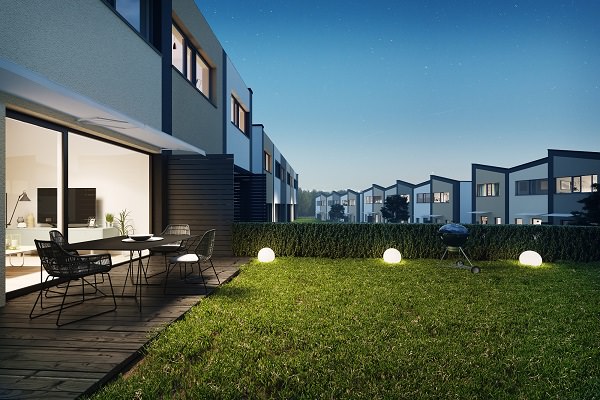 Following the opening of Vilnius western bypass, the city dwellers can enjoy improved transport links with the city centre, while real estate experts observe an increasing number of construction sites around the bypass. The development of the road infrastructure in the capital city prompted developers to start new construction projects in the areas further away from the city centre. Ober-Haus estimates that between 2016 and 2017, a total of 11 residential property and 4 commercial property construction projects were launched in the environs of the western bypass.
Following the opening of Vilnius western bypass, the city dwellers can enjoy improved transport links with the city centre, while real estate experts observe an increasing number of construction sites around the bypass. The development of the road infrastructure in the capital city prompted developers to start new construction projects in the areas further away from the city centre. Ober-Haus estimates that between 2016 and 2017, a total of 11 residential property and 4 commercial property construction projects were launched in the environs of the western bypass.
Developers use the areas located near the western bypass which are less urbanised, yet which feature attractive landscape, wooded and green areas, and water bodies. Most of these areas were forgotten, not adapted for the citizen’s needs, and with untapped potential. When carrying out construction in these areas, developers seek to preserve the existing landscape, to adapt the future projects to the landscape, and to put the infrastructure in place. ‘A good example is the Town House low-rise residential development on nearly 2 ha of land near Vilnius western bypass. The parcel of land has been divided into two almost equal parts. One part will contain A energy class apartments over two floors with spacious yards of 1.8 ares in size. The other part located near the existing stream will be a private park of this residential complex”, Audrius Šapoka, manager of the Residential Real Estate Department of Ober-Haus Real Estate, said. Mr Šapoka notes that projects with private parks and water bodies have been far and few between in Vilnius.
Developers can get larger parcels of land in the surroundings of the western bypass than those in the older residential areas for a competitive price. They also can offer added value of additional spaces to buyers. So private yards or terraces become a huge advantage proposed by developers in the area located further away from the city centre. ‘Developers are building affordable, smaller size homes. We have noticed high demand for smaller size properties, at the same time buyers are increasingly looking for properties with a private outdoor space, which seemingly compensates the small size of the property and extends the existing home space. We have also noticed yet another trend that those who live in the suburbs are moving back to the city and are looking for terraced homes and apartments with small yards’, Mr Šapoka said.
‘The price of the parcels of land in the environs of the western bypass is significantly lower than that in the central part of the city. At the same time the local competition is smaller, therefore developers use the opportunity of active demand to successfully implement their business plans. I believe that in the near future we will witness development of small or medium-size housing projects’, Mr Šapoka added.
The development of the urban road infrastructure and the then prospective western bypass were some of the encouraging arguments for developers to start projects in the areas located further away from centre and for the buyers – to choose residential property in these areas. Today, this is reflected in successful and active development of the western and northern part of Vilnius. A decade ago, the Pilaitė residential area located in the western part of the city was considered to be one the residential areas furthest away from the city centre. However, the boundaries of this residential area have been expanding as a result of active construction of multi-storey blocks in the past decade in the empty space between Pilaitė and the rest of the city. Today Pilaitė borders on other residential areas of the city.
According to the Ober-Haus representative, the improving urban transport links help people in making a decision to move to less urbanised areas where they can fulfil their desire to be closer to nature and still enjoy easy access to the main objects in the city. ‘A 5-minute longer journey to work and back is not a problem, while living close to nature substantially affects comfort levels’, Mr Šapoka said.
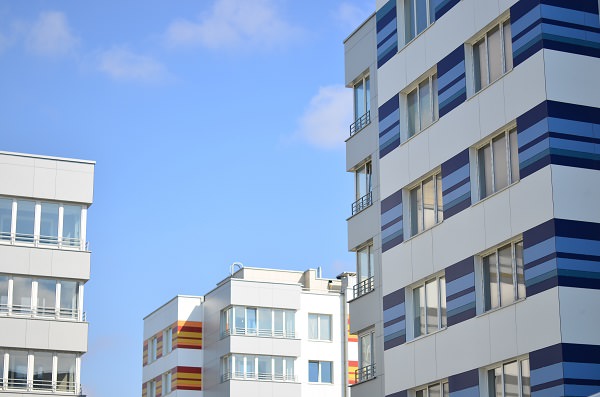 The Ober-Haus Lithuanian apartment price index (OHBI), which records changes in apartment prices in the five major Lithuanian cities (Vilnius, Kaunas, Klaipėda, Šiauliai and Panevėžys), increased by 0.2% in May 2017. The annual apartment price growth in the major cities of Lithuania was 4.4% (the annual apartment price growth in April 2017 was 5.1%).
The Ober-Haus Lithuanian apartment price index (OHBI), which records changes in apartment prices in the five major Lithuanian cities (Vilnius, Kaunas, Klaipėda, Šiauliai and Panevėžys), increased by 0.2% in May 2017. The annual apartment price growth in the major cities of Lithuania was 4.4% (the annual apartment price growth in April 2017 was 5.1%).
In May 2017 apartment prices in the capital grew 0.2% with the average price per square meter reaching EUR 1,440 (+3 EUR/sqm). Since the last lowest price level recorded in May 2010 prices have increased by 24.8% (+286 EUR/sqm). Apartment prices in Kaunas in May grew by 0.5% with the average price per square meter reaching EUR 1.000 (+5 EUR/sqm). In Šiauliai and Panevėžys apartment prices grew by 0.1%, respectively the average price per square meter reaching EUR 602 (+1 EUR/sqm) and EUR 561 (+1 EUR/sqm). Meanwhile, in Klaipėda apartment prices remained stable and the average price per square meter was the same as in May – EUR 1.021.
In the past 12 months, the prices of apartments grew in all major cities: 5.5% in Vilnius, 3.8% in Kaunas, 2.2% in Klaipėda, 3.6% in Šiauliai and 3.0% in Panevėžys.
‘In May this year, the apartment market was active both across the country and in major cities. Although the number of transactions for apartments concluded in Vilnius, Kaunas, Klaipėda, Panevėžys and Šiauliai was 10% smaller than that in January-May 2016, a total of 12% growth was recorded compared to April 2017. Rising housing prices should not come as a surprise, because the overall housing market activity this year remains at a very high level despite significant monthly fluctuations. However, the results of the past few months have showed a gradual decrease in growth of price levels and the market remains in the sustainable development mode’, Saulius Vagonis, manager of the Valuation and Market Research Department at Ober-Haus, said.

 Search
Search 
